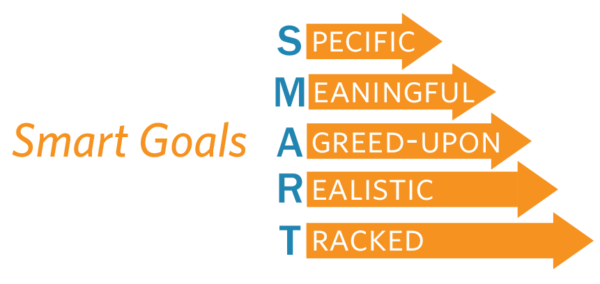This article is the third in a series unpacking the S.M.A.R.T. goals model, in which we adapt the acronym to focus on achieving better outcomes, not just writing better goals. This article dives into redefining the ‘M’ from “measurable” to “meaningful”, emphasizing the “why” and higher organizational purpose behind our goals.
“Please help me connect the dots!”
In our work with frontline health care staff, this plea is one of the most common ones we hear. With new protocols, payer requirements, and regulations shifting constantly, staff understandably struggle to make sense of all of these changes. That’s why setting goals is just step one. Linking them to organizational purpose and exploring them in ways that are meaningful to your team is essential to have a chance at achieving them.
In today’s metrics-driven world, it is easy for even the most compassionate caregiver to quickly become obsessed with the numbers. Thirty-day readmission rates. Incidents per thousand patients. Patient experience top box scores. Chasing the numbers can become all-consuming.

So, rather than simply tracking the numbers and trends, let’s consider the meaning and power behind key questions on patient satisfaction surveys:
- Treating patients with courtesy and respect
- Listening to them carefully
- Being responsive to their needs
When scores are lower on these important questions, it means we’ve fallen short in caring for our fellow human beings in ways they want, need, and deserve.
When we develop goals that underscore the powerful things that happen when we do achieve them, it not only gives more substance to the goal; it gives more meaning to the work each of us in health care do every day.
Following are several tips for developing and leveraging more meaningful goals:
1. Begin goals with brief purpose phrases that usually start with “to,” such as:
- To reduce suffering for patients, fully implement new fall precautions that will decrease the incidence of falls by …
- To improve patient assurance and understanding, consistently use teach-back and open-ended questions that will increase “listen carefully” and “explained things” scores by …
- To reduce unexpected returns to the hospital for cardiac patients following their stay/procedure, change practice for discharge instructions to include …
2. Use storytelling to get beyond the numbers and emphasize the meaningful impact compassionate care has on patients’ lives.
3. Recognize team members’ specific contributions that help achieve team goals, reinforcing the difference each individual can make in achieving success.
Research tells us that when we lose a sense of purpose in our work, that’s one of the major contributing factors to burnout. Goals that are meaningful and create a shared sense of purpose across the team are good for our patient/customers. They’re also good for frontline staff and leaders.
Stamp & Chase offers unexpected solutions to challenges of employee burnout, retention, and disengagement that many leading organizations are facing today. If you’d like to learn more about our robust tools and approaches that help leaders transform staff engagement by developing middle managers, send us a message here.
